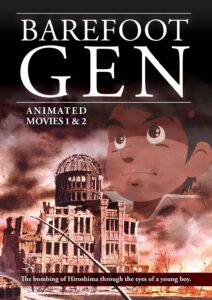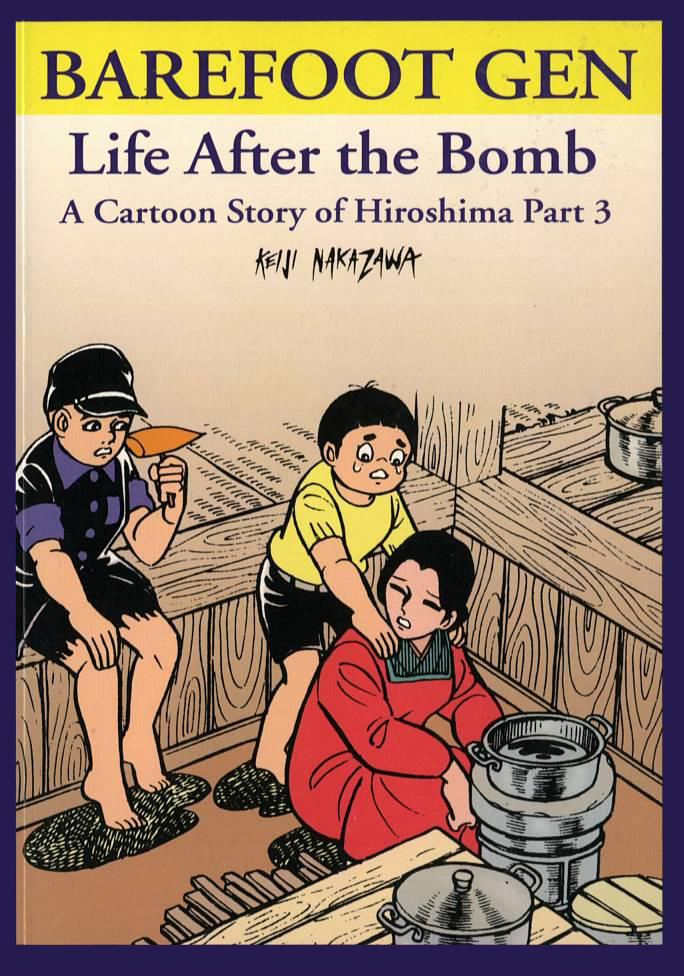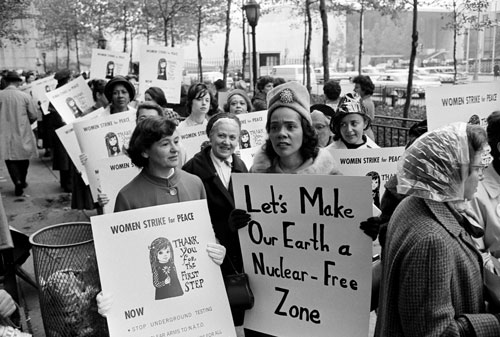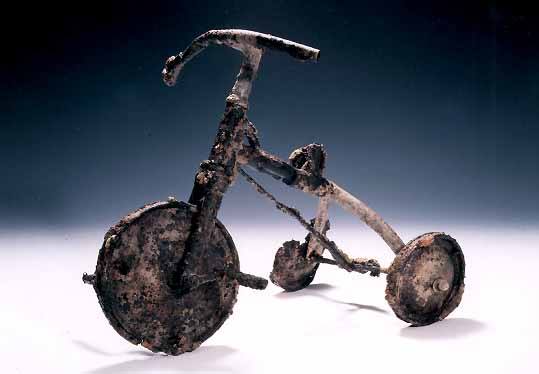
Opening in the rundown city of Hiroshima, we witness the events leading up to the bombing through the eyes of Gen, a young boy growing up in post-war Japan. Fortunately when the bomb detonates, Gen is shielded by a stone wall. Others are not so lucky and are burned to death instantly by the 5000 degree heat flash. As Gen runs home to find his family, he sees victims of the bomb blast staggering around shocked and helpless in the rubble, their skin burnt and melting.
When Gen reaches home he finds that his house has collapsed, trapping his father, brother and sister in the wreckage. Pulling his pregnant mother to safety, Gen watches as the rest of his family are burnt alive.
What follows is a night-marish journey into the unimaginable horrors of atomic war and the struggle to survive in a place that has been destroyed by the most devastating device ever conceived by man. [Producer’s description.]
As teachers know, some classroom materials invariably work, no matter the group of students. Barefoot Gen is one of them.
Barefoot Gen, a Japanese animated feature film, tells the story of Gen (pronounced with a hard “G”), a young boy who, along with his mother, survives the bombing of Hiroshima.
The story chronicles their struggles as they try to rebuild their lives from the bomb’s ashes. It is based on the critically acclaimed, semi-autobiographical Japanese comic book series Hadashi no Gen, by Keiji Nakazawa. Both the comic strip and the feature film oppose the Japanese government’s actions during World War II and include criticism of the intense poverty and suffering forced onto the Japanese people by their government’s war effort.
In the lesson, Haiku and Hiroshima: Teaching About the Atomic Bomb, Wayne Au describes how he introduces the film to high school students and how he follows up with haiku written by survivors of the bombings and students’ own writing.
Trailer
Produced by Geneon. Japanese/English subtitles.
Check your streaming platforms to find Barefoot Gen.










I taught the Story of Gen for almost 20 years as an print animae for my high school English students in Gary, Indiana. I found they knew very little about WWII and the atrocities we committed through dropping of the bombs on Hiroshima and Nagasaki. This is right now an even more important film when we are in the midst of a proxy war between the U.S./NATO and Russia I retired now but I want to send a copy of the film to my niece and nephew who are interested in Japanese art forms. Now they need to know about the history of the war against the people.
As an adult student, I am using this movie to review the changes in Americans’ point of view then and comparing it to Americans’ point of view now, regarding the dropping of the atomic bomb. This analysis considers all the new information we have now that was not available before, with great weight on witness accounts from survivors. This is a very interesting subject, and the movie Barefoot Gen is a perfect example of survivor accounts and the reality of the devastation and difficulties in life after the bomb exploded.
I purchased this film after I visited Hiroshima, Japan. I show parts of the film and use it to frame an alternative perspective that is less a statement of “anti-Americanism” and more about Keiji Nakazawa’s personal viewpoint worth examining. I also incorporate the images from the Marukis’ Hellfire Murals. Since we all use primary documents to teach history, I want students to see that art (and art forms like anime and manga) can serve as powerful documents as well. I highly recommend this film.